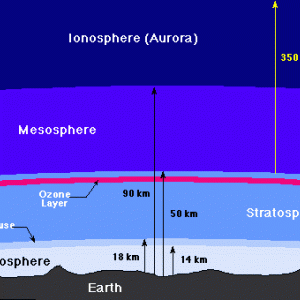College of Liberal Arts & Sciences
8A70.20 - Earth's Atmosphere
- Patrik Vogt, Lutz Kasper, "Experimental Investigation of the Tropospheric Temperature Gradient with Flightradar24", TPT, Vol. 61, #2, Feb. 2023, p. 148.
- Andrea Bussani, Cinzia Comici, "Thermal Tide Detection: A Case Study to Introduce Open Data Analysis in High School", TPT, Vol. 61, #1, Jan. 2023, p. 68.
- Gordon McIntosh, "A Simple Photometer to Study Skylight", TPT, Vol. 44, # 8, Nov. 2006, p. 540.
- Neil M. Shea, John Loomis, "Estimating the Effective Depth of the Atmosphere Using The Old Farmer's Almanac", TPT, Vol. 35, #2, Feb. 1997, p. 90.
- William R. Kuhn, Susan E. Postawko, "Solar Radiation and the Earth's Atmosphere", TPT, Vol. 26, #5, May 1988, p. 266.
- Michael Vollmer, "A Simple Method for Estimating the Thickness of the Atmosphere by Light Scattering", AJP, Vol. 71, #10, Oct. 2003, p. 979.
- Bodil Karlsson and Theodore G. Shepherd, "The Improbable Clouds at the Edge of the Atmosphere", Physics Today, Vol. 71, #6, June 2018, p. 30.
- R. Mark Wilson, "The Upper Atmoshpere's Natural Thermostat", Physics Teacher, Vol. 71, #4, Apr. 2017, p. 23.
- "Many Planets, Similar Tropopauses", Physics Today, Vol. 67, #2, Feb. 2014, p. 18.
- William Putman, "A Model Atmosphere", Physics Today, Vol. 67, #1, Jan. 2014, p. 72.
- Bjorn Stevens, Sandrine Bony, "Water in the Atmosphere", Physics Today, Vol. 66, #6, June 2013, p. 29.
- Lorraine A. Remer, "Just Add Aerosols", Science, Issue 6188, Vol. 344, June 2014, p. 1089.
- Janice VanCleave, "Atmospheric Circulation", Geography for Every Kids: Easy Activities that Make Learning Geography Fun, p. 145.
- M. Minnaert, "44, Shadow Bands", Nature of Light and Color in the Open Air", p. 71.
- M. Minnaert, "43, Scintillation of Planets", Nature of Light and Color in the Open Air", p. 70.
- Julius Sumner Miller, Q194 & A194, Millergrams II – Some More Enchanting Questions for Enquiring Minds, p. 54 & 106.
Disclaimer: These demonstrations are provided only for illustrative use by persons affiliated with The University of Iowa and only under the direction of a trained instructor or physicist. The University of Iowa is not responsible for demonstrations performed by those using their own equipment or who choose to use this reference material for their own purpose. The demonstrations included here are within the public domain and can be found in materials contained in libraries, bookstores, and through electronic sources. Performing all or any portion of any of these demonstrations, with or without revisions not depicted here entails inherent risks. These risks include, without limitation, bodily injury (and possibly death), including risks to health that may be temporary or permanent and that may exacerbate a pre-existing medical condition; and property loss or damage. Anyone performing any part of these demonstrations, even with revisions, knowingly and voluntarily assumes all risks associated with them.
